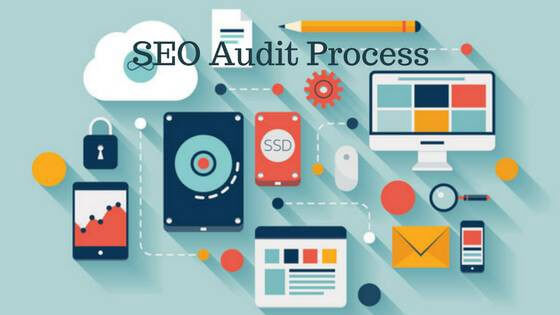An SEO audit seems to be a standard procedure for all websites. You must do an SEO audit of your website frequently if you are determined to succeed and sustain your online business. We know that a properly executed SEO audit would be giving you a much-enhanced insight into your overall site, traffic, individual pages, and more. It is an effective way of boosting performance and rank higher on the SERPs.
As per experts at https://www.entrepreneur.com, since SEO best procedures and practices keep changing all the time, it is mandatory on the part of the business owners to keep conducting periodic assessments for determining whether any adjustment is needed. Suppose a business website is not optimized properly for search, it would be losing out on substantial traffic from Google and other search engines and that may include potential customers.
Step 1. Make Sure That Just a Single Version of Specifically Your Site Seems Browse-able
The very first thing, you need to determine is if your site is functioning effectively. This could be achieved with proper technical analysis. Technical analysis would be helping you with numerous things that could be grouped as index-ability and accessibility. Accessibility is associated with the user’s and Google’s ability to easily access your website. In the case, your potential visitors cannot see your web pages; there is no reason to go on generating new content. Let us explore a few steps to start scanning your website for any SEO issues. First of all, you must make sure that just a single version of precisely your website is browse-able. You must start by considering all ways somebody could go about typing your website address directly into a browser.
For instance:
- http://yourdomain.com
- http://www.yourdomain.com
- https://yourdomain.com
- https://www.yourdomain.com
Just one among all the above-mentioned website addresses should be accessible while the rest of them should be 301 redirected to specifically the canonical version. If everything seems fine, consider making a note of this canonical version and get ready for the next step.
Step 2. Start Crawling Your Website
You need to initiate a website crawl that must go on running smoothly in the background. An SEO crawler would similarly spider the website like Google and come up with some vital information on the current SEO setup and the structure. You could mostly leave the rest of your settings just the way they are. You may then toggle the Check HTTP status of all the external links and go on then to executing JavaScript options.
Many effective SEO analyzer tools are great at doing this like Beam Us Up and Screaming Frog, etc. These two are brilliant options. In the case, you are doing an Ahrefs Blog; you should proceed with Ahrefs ‘Site Audit’ for ensuring that Site Audit would be examining all external links specifically on your website including any JS links too.
Once done, go ahead and hit ‘Create Project’. Now the Site Audit would start to work in the background as you go on auditing your site. Contact a reputed Fort Lauderdale digital marketing company for perfect SEO audit solutions.
Step 3. Go About Examining On-Page Tag Optimization
One of the most effective and easiest ways of improving quickly your site’s SEO is via on-site changes. Even though it could take a considerable amount of time for building top-quality backlinks, the cornerstone good search engine optimization performance, we understand that on-site modifications would be taking only a few hours of hard work and devotion.
Start your auditing by asking some of the vital questions. Identifying or detecting drawbacks in this field could be providing an easy place for starting all your site’s future improvements. Some questions to ask:
- Are all my title tags specifically written for appealing to the search engine visitors and website visitors or do you think that they are simply stuffed with keywords?
- Are the title tags containing relevant brand mentions and SEO keywords?
- Are these title tags restricted to 65 characters?
- Are these Meta description tags providing fascinating content that should appeal to and entice search engine result viewers?
- Are all pages on the website containing keyword-rich naturally written tags?
- Do all web pages on my site contain high-quality authentic content?
- Are my pages containing internal links for facilitating search engine robot and visitor movement all through my site?
- Are my pictures optimized as per the latest SEO best practices?
Step 4. Examine Google for Any Indexation Issues
From Google’s perspective, indexability and accessibility should go well-coordinated or hand in hand. Both of them are integral to the visibility of your page on the SERP. Do not forget that accessibility implies crawlers could easily have access to your web pages. However, indexability would be referring to those web pages being showcased on the SERP after being accessed. You cannot get any rankings if you are not getting indexed in Google. For examining if your website is indexed, consider going to
Google Search Console > Google Index > Index Status.
Suppose your crawl discovers a certain number of pages and you find that a few pages are not indexed. First of all, you would think that some of those pages seem to be nonindexed. Try checking that. You simply need to scroll down and examine the list of errors that were detected during the crawl. This way you would discover the number of live pages, redirects or even broken pages.
Suppose you discover that Google has indexed more pages as compared to live pages on your website. In such a case, you should realize that Google must have indexed certain homepage elements as separate pages. These would be having no content and they are in fact, broken and must be eliminated from the index.
Step 5: Look For Any Broken Links or Dead Pages
Avoid all links to internal dead pages or broken outbound links. They could prove to be highly detrimental to the SEO performance of your website. You must detect such issues. Suppose your website is running on a specific CMS or any precise e-commerce platform, you could consider installing a tool that is capable of checking automatically.
For instance, suppose your website is running on WordPress, you could install the effective Broken Link Checker plug-in for notifying you the moment any broken link is identified or detected. You could alternatively consider navigating to a site such as BrokenLinkCheck.com and use its free link check for identifying any problems on your website that needs immediate resolution.
Examine that You Are Ranking for Your Brand Name
You must consider going to Google and searching for your specific brand name. If you find your website as the very first organic result, you could expect this to be very much your homepage. Suppose you have missed the top rankings and are visible further down in the SERP, then it is obvious that Google thinks that some other site is a more suitable result for your specific brand name.
You would encounter such issues while using generic words as your precise brand name. You would find it tough to get a ranking and searchers are not interested in seeing your website while they are looking for that branded term. Link building and brand building are the only solutions.
Conclusion
SEO audit is a crucial process for your site. You could now easily identify what is going wrong and where you need to devote your attention and what all you require improving. With a meticulous SEO audit, you could boost your website and make it far more visible on Google culminating in more web traffic and even conversion.




